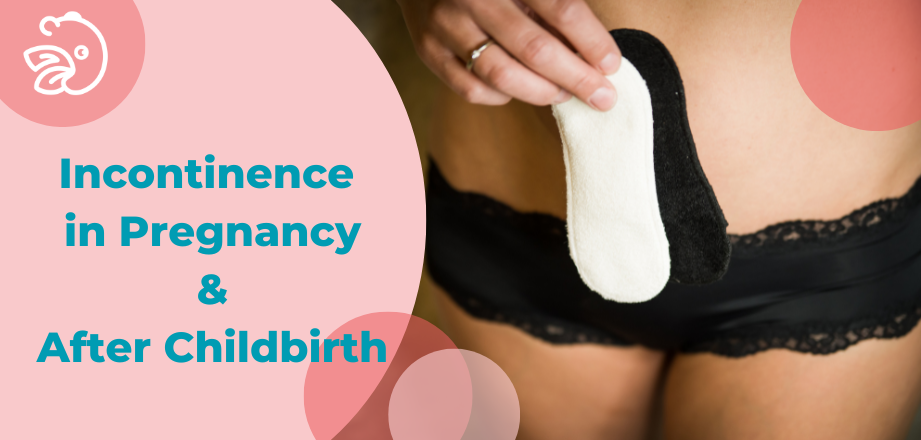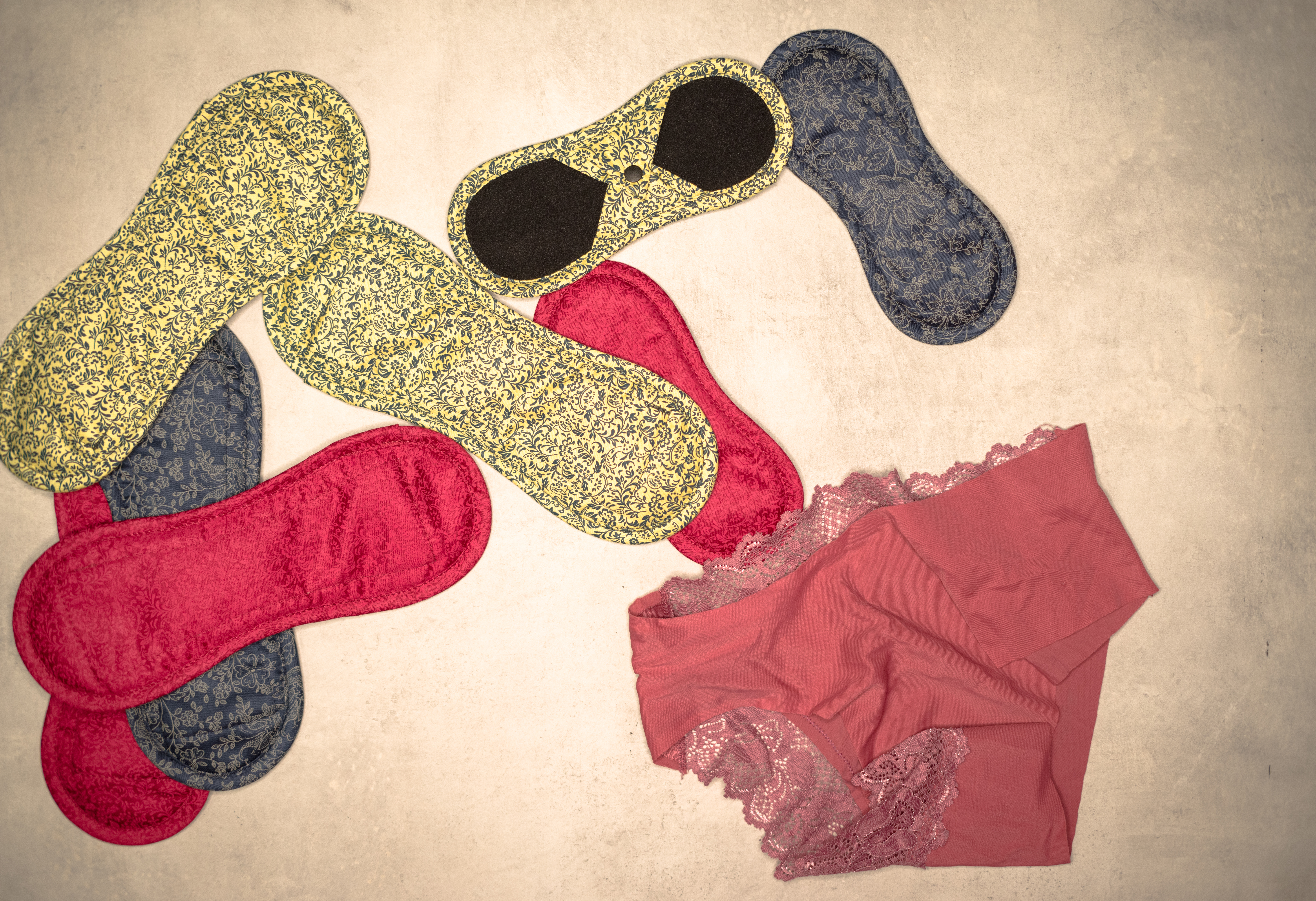60 % of Women Suffer from Pregnancy Incontinence and 30 % Women Deal With Incontinence After Childbirth
Generally suffering from urinary incontinence twice as much as men, 50% of 50+ women deal with incontinence issues. And almost every woman encounters some form of incontinence in the course of her life. That said, there’s a silver lining to this cloud — it’s often reversible, and pelvic muscles exercise and a healthy diet are a remedy available for everyone.
Medical textbooks differentiate various types of incontinence (according to cause) and also evaluate its seriousness by degrees.
Degrees of Incontinence
- 1st degree incontinence is the least serious. Urine leaks just in droplets and only when one’s intestine pressure suddenly increases (the most typical example would be sneezing and coughing).
- 2nd degree incontinence is slightly more intense — urinal leaks may be caused just by mild physical activity and the leaks are more voluminous.
- 3rd degree incontinence is the most grave — urinal leaks are uncontrollable and sometimes even accompanied by stool.
Types of Incontinence
1. Stress Incontinence
Probably the most common type of incontinence — and usually the least serious, as it rarely gets past the 1st degree. The “stress” in the name doesn’t imply mental stress but pressure for one’s intestines. Unwanted urinal leaks occur when intestine pressure increases rapidly, usually when stomach muscles contract suddenly and/or powerfully. Typically when people sneeze, cough, lift a heavy object, or jump on a trampoline.
Stress incontinence is caused by weakened pelvic muscles — a natural occurrence during pregnancy, after childbirth, or as a side effect of menopause (that’s why women suffer from stress incontinence more than men). That said, targeted exercise and a healthy diet can do wonders to diminish the unwanted urinal leaks.
How to Cure Stress Incontinence:
- Pelvic floor exercise. Easy to do but super effective — an ingenious set of pelvic floor exercises was put together years ago by a Californian doctor Arnold Kegel, and doctors recommend it to this day. The so-called Kegels are totally doable for anyone, don’t require a lot of time or special equipment and can be performed almost anywhere. When doing Kegels, you simply contract and release your pelvic floor muscles repeatedly. It’s as if you were trying to stop a flow of pee for a moment, then release it, then make it stop again. We wholeheartedly recommend Kegels to any woman as prevention! (By the way, there’s a very positive “side effect” of Kegels that is worth mentioning — trained pelvic floor muscles have a genuinely positive effect on one’s sex life.)
- Healthy diet: Nothing groundbreaking here — obesity, smoking, too much coffee (which increases the production of urine) and lack of physical exercise are all factors that have a negative impact on one’s health. And make incontinence worse.
Looking for a Remedy for Pregnancy Incontinence or Incontinence After Childbirth?
In most cases, pregnancy incontinence or incontinence after childbirth is “just” stress incontinence. During pregnancy, one’s intestine pressure generally increases, and as the baby grows, your bladder can get literally oppressed. Giving birth then weakens one’s pelvic muscles. That’s why incontinence in pregnancy and after childbirth is a very common occurrence.
Stress incontinence can be significantly diminished by pelvic floor exercise and a healthy diet, to the point of disappearing entirely after some time. Although jumping on a trampoline may never feel the same once you’ve given birth.
So what to do in the meantime before you get your pelvic floor muscles back in shape? It’s usually not necessary to buy special incontinence pads for minor symptoms of stress incontinence. Disposable incontinence pads are usually designed for higher degrees of incontinence. And they're bad news for the environment.
Minor incontinence issues during pregnancy or after childbirth can be usually tackled by a light washable incontinence pad. Such as our Reusable Panty Liner — made of organic cotton terry which means it absorbs liquids very fast. This quality is very important when it comes to incontinence pads and it’s the reason why regular sanitary pads don’t work for urinal leaks — they’re designed to absorb blood which is not as liquid as urine.
If you feel like you need a larger pad than just a panty liner, have a look at our reusable sanitary pads — also made of organic cotton and highly absorbing. Simply perfect as incontinence pads.

2. Urge Incontinence
This type of incontinence makes you go to the loo way too often. Sometimes, you may feel the urge even if you’ve just been. It’s because your bladder can’t accumulate and withhold urine to its full capacity.
The primary cause of urge incontinence is a hyperactive bladder. The secondary cause is usually inflammation or infection.
How to Cure Urge Incontinence:
- First of all, you need to address the secondary cause, i.e., treat the inflammation/ infection. There’s no better cure than prescribed antibiotics in this case.
- You can speed up the cure by using these nutritional supplements:
- cranberries (either the dried fruit or more concentrated pills),
- pumpkin seeds,
- special urologic teas (herbal blends that usually contain indian cress and goldenrod)
- These supplements can help you cure an inflammation in its early stages and are an effective prevention for those who suffer from repeated urinary infections.
Preventing Repeated Urinary Infections & Inflammations
Do your urinary infections and/or inflammations like to come back? One effective remedy is to switch to reusable sanitary pads during your period. It’s because one of the causes for repeated inflammations are bacteria — and those thrive in wet and warm environments, with little to no fresh air. Disposable sanitary pads tend to be unbreathable — and the less breathable layer you put in your underwear, the more the bacteria thrive.
That’s why medical experts are strongly against using tampons if you suffer from repeated urinary infections (the same applies to gynaecological infections and inflammations). Bacteria love tampons as they’re warm, wet, and inside — with no fresh air getting through to them.
Washable sanitary pads and period pants are the best period products you can use to prevent recurring infections and inflammations. They’re way more breathable than disposable pads — which makes them really comfortable to wear! They’re just one extra layer in your underwear, made of organic cotton. Period pants with a waterproof layer also make suitable incontinence pants.
3. Paradoxical Incontinence
Very often a serious type of incontinence, caused by tumors or occurring as a side effect of radical gynaecological surgeries. The bladder doesn’t work right and simply overflows. Treatment often needs to be surgical.
4. Reflex Incontinence
Caused by a malfunction of one’s central nervous system, reflex incontinence often accompanies dementia, various nerve diseases, or injuries to the spine and spinal cord. Which often makes this type of incontinence incurable — incontinence pads and incontinence pants are a must-have.
5. Psychological Incontinence
As the name suggests, this type of incontinence is caused by psychological issues — most often by stress, anxiety, and fear. It often affects children undergoing some difficult life situations (divorcing parents, bullying at school etc.). The cure is to address the triggering issue.
6. Mixed Incontinence
When multiple causes combine, mixed incontinence occurs. The most common combination of incontinence for women is stress and urge incontinence.
To make our list complete, let’s mention one more type of incontinence — prostate incontinence, caused by pressure of an enlarged prostate gland on the urethra.
Incontinence Is Very Normal for Women and Usually Curable
As scary as the numbers at the beginning of this article may be, we didn’t want to scare you. On the contrary —- we wanted to show that occasional urine leaks are not that uncommon and there’s no need to be ashamed when they happen to you. Every other woman encounters some form of incontinence in her life, sometimes repeatedly. The most common type of incontinence — stress incontinence — tends to be the mildest and can be cured or significantly diminished.


